Honouring fallen military while respecting social distancing.
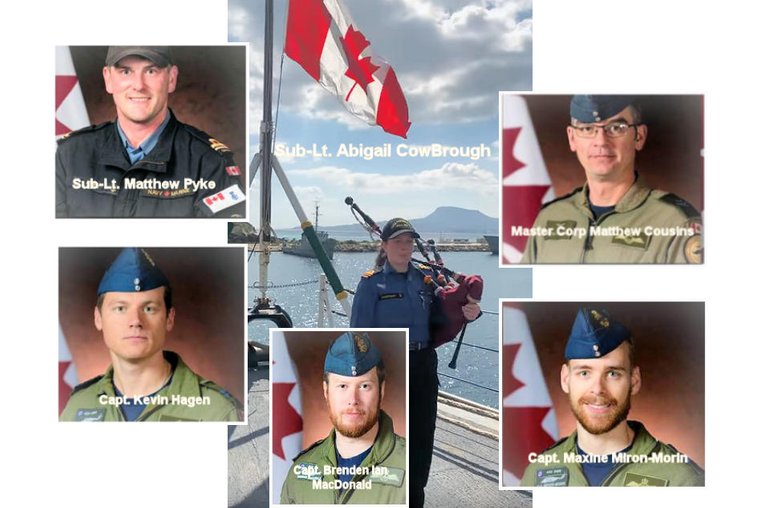
2020 hasn’t been kind to the world.
For Canadians, the last few weeks has brought some additional twists to add to the impact of the pandemic. On April 19th most of the country woke to the news of a gunman on a twelve hour rampage in rural Nova Scotia. I wrote about that here. The rampage resulted in the deaths of 22 Canadians including an RCMP constable.
On April 24th, Sub-Lt Abigail Cowbrough stood on the deck of the HMCS Fredricton playing Amazing Grace on the bagpipes to honour those who had died in her home province. The Fredricton was off the coast of Greece participating in NATO training exercises.
On April 29th, Cowbrough and five others: Sub-Lt. Matthew Pyke, Master Cpl Matthew Cousins, Capt. Kevin Hagen, Capt. Maxine Miron-Morin and Capt. Brenden Ian MacDonald flew off the Fredricton on a chopper as part of the training exercises.
On their return approach, the chopper crashed, killing all aboard. The body of Sub-Lt. Cowbrough was recovered. The wreckage and presumably the remaining five are lying in 3,000 meters of water.
Repatriating the Fallen Home
During Canada’s participation in the Afghanistan war, the public became very aware of repatriation ceremonies. The bodies of our fallen were flown to CFB Trenton in eastern Ontario, not far from where I live.
On arrival they were removed from the plane bearing them home with a solemn ceremony and moved to waiting hearses. This was in the presence of their comrades, officials and the grieving families. There were people, lots of people on the tarmac during the ceremonies.
The hearses along with the families would travel by motorcade to the coroner’s office in Toronto along a stretch of the Trans Canada Highway which has been officially named the “Highway of Heroes”. There are 53 overpasses along the route.
Along the route, regardless of the time of day or the weather, people gathered. First responders and their vehicles, veterans organizations and ordinary Canadians lined the route and the overpasses to show respect and support to the families. There were people, thousands of people on those bridges and along the route.
And Now We Are In the Age of COVID-19
There were no public ceremonies for the victims of the Nova Scotia rampage. No regimental funeral for Constable Stevenson. It would have drawn people, thousands of people. Virtual vigils and tributes were arranged and people from across the country were able to participate.
Now, how to handle the duty the military has to return our fallen Canadians to Canada and their families? To say it was going to be a challenge to bring them home with the dignity and respect that has been paid to our previously fallen, was a bit of an understatement.
There was something else different this time as well. This would be a first public repatriation where all the fallen were not being brought home in coffins. Five bodies were not recovered. The solution was for each member’s service cap to be borne off the plane on a pillow and placed in a hearse as if it was a coffin.
Repatriation Adjusted for Social Distancing
In the days leading up to the arrival at CFB Trenton the public was asked by the Premier of Ontario and the Department of National Defense not to go to the bridges. DND was going to livestream the arrival on their Facebook page. The news networks would be broadcasting it live.
The first thing I saw after the C-17 taxied onto the tarmac yesterday was service members wearing masks setting up that area where the families would assemble. They were segregated into groups to allow each family to be together with some distance between each family.
With the disruption in commercial flights in Canada, the military had flown the families in on their aircraft.
Next I watched as the quarter guard and the bagpiper were marched into place. All wearing masks and six-foot distancing all around.
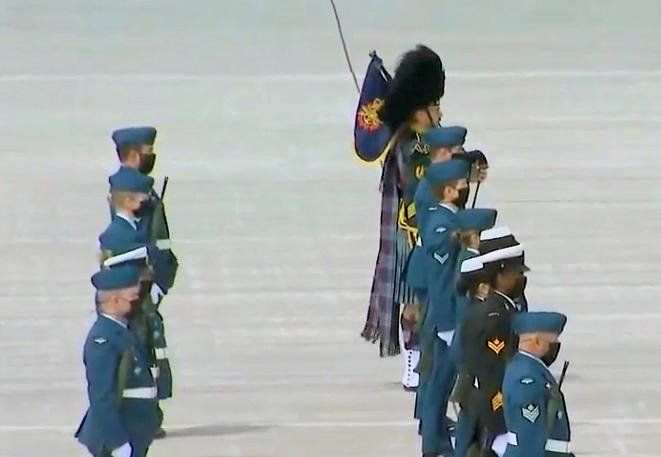
A quarter guard is a detachment of one non-commissioned officer and six or eight other ranks formed in two ranks as a ceremonial guard.
What looked to be crew members moved out onto the tarmac by the plane. All spaced six feet apart.

Over by the hanger, Government officials lined up outside the hanger where the families were. They included Governor-General Pyette, Prime Minister Trudeau, Minister of Defense Sajin, Chief of Defense Staff Vance and other officials. All wearing masks and all socially distanced.
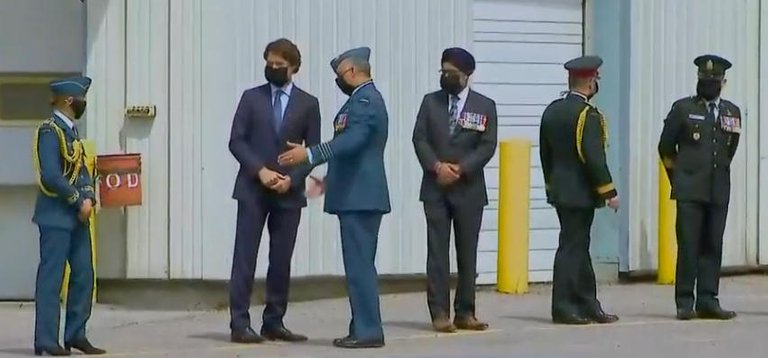
After the families were escorted to their places on the tarmac, the officials moved in single file to a spot near the quarter guard between them and the waiting hearses.
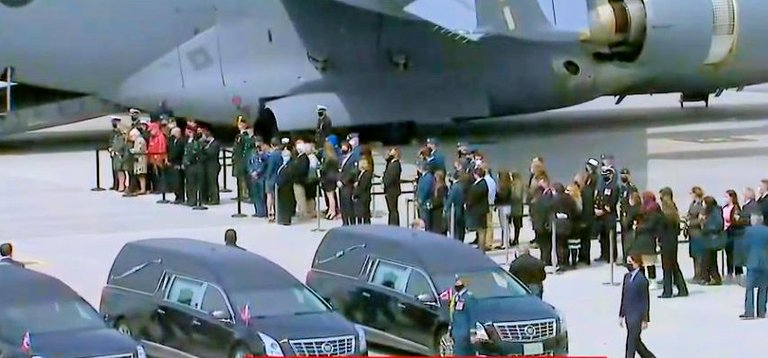
One by one, the coffin and then the member’s service caps were borne to the waiting hearses.
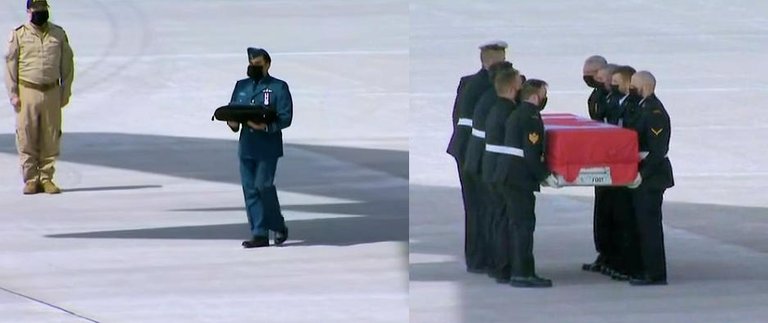
As each were placed in the hearse, family were escorted to the hearse to spend a few moments with their returned family member.
While many of the family members didn’t have masks on, all the military support people around them did.
Along the Highway of Heroes
As the motorcade moved off and headed to Toronto, it became evident not all Canadians heeded the requests to stay home. There were people along the route and on the bridges. The reports I saw said the people who did show up did remain socially distanced while showing their respect.
Nevermore to roam
Open wide Thine arms of love
Lord, I'm coming home
— from Lord, I’m Coming Home
(played by the piper for each of the fallen)

Shadowspub is a writer from Ontario, Canada. She writes on a variety of subjects as she pursues her passion for learning. She also writes on other platforms.

She created Prompt A Day to share with others. You can subscribe to Prompt A Day for a set of ideas in your inbox every day.